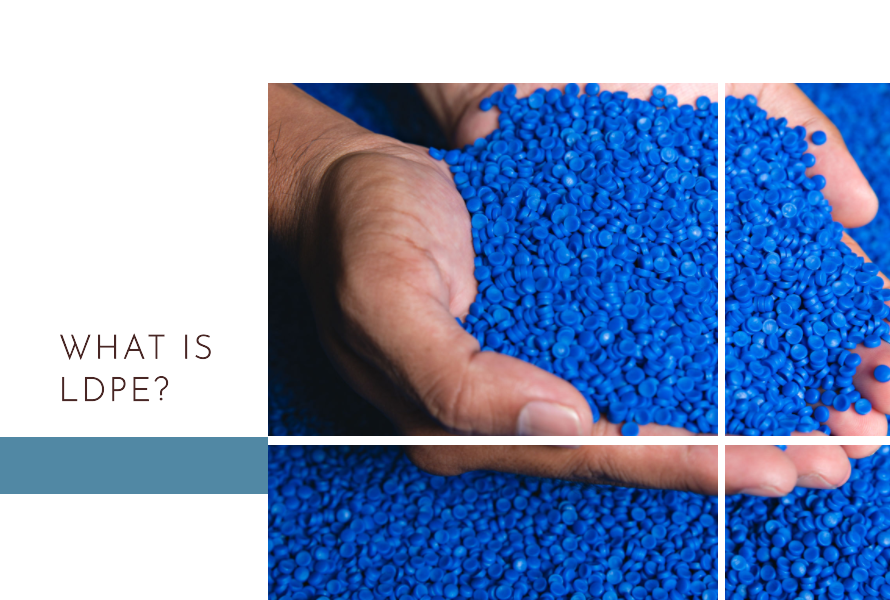Low-density polyethylene (LDPE) is a versatile thermoplastic material that finds widespread usage across various applications owing to its desirable characteristics. In this article, we will delve into the nature of LDPE, its inherent properties, commonly encountered applications, and the employment of EuroPlas masterbatch for LDPE plastic products.
.jpg) What is LDPE (Low density polyethylene)? Properties & applications
What is LDPE (Low density polyethylene)? Properties & applications
Table of Contents
- Introduction
- What is LDPE?
- Properties of LDPE
- Common Uses of LDPE
- EuroPlas Masterbatch for LDPE Plastic Products
- Benefits of EuroPlas Masterbatch
- Conclusion
- FAQs
1. Introduction
LDPE, a highly versatile plastic material, has been utilized since the 1930s. This polymer belongs to the polyethylene (PE) family, which is characterized by its low density and branched chain structure. Renowned for its remarkable attributes of flexibility, toughness, and transparency, LDPE has become a preferred choice across diverse applications.
Low-density polyethylene, a widely employed thermoplastic, is recognized for its flexibility, durability, and toughness. With a lower density compared to other polyethylene variants, LDPE exhibits enhanced flexibility and reduced rigidity. It finds extensive utility in a multitude of sectors, including packaging, agriculture, construction, and consumer goods. In the topic, we will delve into its mechanical, thermal, electrical, and chemical properties, explore its common applications, and elucidate the benefits derived from utilizing EuroPlas masterbatch for LDPE plastic products.
2. What is LDPE?
LDPE, which stands for low-density polyethylene, is a thermoplastic material synthesized through the polymerization of ethylene monomers. Its unique branched chain structure and low density impart an array of beneficial properties, contributing to its status as one of the most widely used plastics worldwide. To create LDPE, ethylene monomers are subjected to high pressure and temperature in a process known as polymerization. Once produced, LDPE is highly malleable and can be melted and reshaped numerous times without losing its desirable properties. Additionally, it is resistant to moisture, chemicals, and UV radiation, making it a robust and long-lasting material. As a result, LDPE is commonly utilized in the manufacture of films, sheets, and containers due to its flexibility and transparency.
 What is LDPE?
What is LDPE?
3. Properties of LDPE
The properties of low density polyethylene make it a highly used material for numerous applications. These properties include:
A. Physical Properties
This is a remarkable material that exhibits translucency, flexibility, and lightweight properties. It also has excellent resistance to water, chemicals, and impact. Additionally, it possesses a low melting point and a low glass transition temperature, which makes it highly malleable and easily shaped to meet diverse needs.
B. Mechanical Properties
It exhibits outstanding toughness, flexibility, and ductility, among other exceptional qualities. It can withstand extreme stress and strain without cracking due to its excellent impact resistance. While it may not be as strong or stiff as other materials because of its low tensile strength and Young's modulus, it is a reliable and highly adaptable material thanks to its exceptional qualities.
C. Thermal Properties
Low melting points and glass transition temperatures are characteristics of a material called LDPE. This property provides extraordinary thermal stability and enables it to tolerate high temperatures without degrading. Additionally, LDPE has good insulating qualities due to its low heat conductivity.
D. Electrical Properties
It is a superb electrical insulator due to its remarkable dielectric characteristics. It cannot absorb or lose a significant amount of electrical energy because of its low dissipation factor and dielectric constant.
E. Chemical Properties
There are a handful of compounds that are unable to pierce its robust structure, such as acids, bases, and alcohols. However, it fails miserably in the presence of acetone and benzene as solvents. One of its exceptional qualities is its resistance to UV radiation, making it the perfect option for outdoor applications where continuous exposure to sunshine is anticipated.
 Properties of LDPE
Properties of LDPE
4. Common Uses of LDPE
Low density polyethylene is used in many applications due to its outstanding properties. Some of its most common uses include:
Packaging: It is used to make plastic bags, shrink wrap, and stretch film
 Plastic bags
Plastic bags
Consumer goods: It is used to make toys, water bottles, and kitchenware.
 Toys
Toys
Construction: It is used to make geomembranes, pipe coatings, and insulation.
.jpg) Geomembranes
Geomembranes
Agriculture: It is used to make greenhouse film, mulch film, and irrigation pipes.
.jpg) Greenhouse film
Greenhouse film
Medical: It is used to make medical bags, tubing, and syringes.
.jpg) Medical bags
Medical bags
One example of low density polyethylene in action is the use of LDPE plastic bags in grocery stores. These bags are perfect for transporting groceries since they are durable, lightweight, and flexible. Additionally, because it is resistant to water and chemicals, it helps protect food items from moisture and contamination during transport.
5. Conclusion
Low density polyethylene is a flexible thermoplastic substance that has several applications across various sectors. It possesses desirable properties such as toughness, flexibility, and chemical resistance. It is widely used in packaging, consumer goods, construction, agriculture, and medical fields. To further enhance the properties of LDPE plastic products, EuroPlas masterbatch is an additive that can provide benefits such as color enhancement, UV resistance, anti-static properties, and flame retardancy.
Overall, Low Density Polyethylene is a valuable material that plays a crucial role in many different industries. The addition of EuroPlas masterbatch can provide even more benefits for LDPE plastic products.
6. EuroPlas Masterbatch for LDPE Plastic Products
EuroPlas masterbatch a renowned company specializing in providing top-notch masterbatch solutions. Within we impressive product portfolio, two masterbatch types have gained immense popularity: PE filler and color masterbatch.
PE filler masterbatch is meticulously formulated with polyethylene (PE) filler particles to enhance and reinforce the mechanical properties of LDPE plastic. These tiny, uniformly-sized granules are derived from recycled polyethylene or other filler materials. When blended into LDPE resin, PE filler masterbatch significantly improves the strength, durability, and impact resistance of the final plastic product. Moreover, it also helps increase product volume and reduces raw material costs, making it a cost-effective choice.
Color masterbatch, on the other hand, is a remarkable masterbatch variant containing color pigments and complementary additives. Specifically designed for coloring LDPE plastic products, color masterbatch offers an extensive range of vibrant hues and can be customized to meet individual customer requirements. When seamlessly incorporated into LDPE resin, color masterbatch ensures the production of plastic items with uniform and stable colors, elevating their aesthetics and enhancing the overall brand value of the end product.
Benefits of EuroPlas Masterbatch
- Color enhancement: EuroPlas masterbatch can provide vibrant and consistent colors to LDPE plastic products.
- UV resistance: EuroPlas masterbatch can increase the UV resistance of it, making it more suitable for outdoor applications.
- Anti-static properties: EuroPlas masterbatch can reduce the static charge buildup on LDPE plastic products.
- Flame retardancy: EuroPlas masterbatch can improve the fire resistance of polyethylene low density , making it safer in certain applications.
EuroPlas masterbatch is often added during the forming of plastic products. The additive is thoroughly mixed and dispersed within the low-density polyethylene matrix, ensuring uniform distribution of its properties throughout the final plastic product. By utilizing EuroPlas masterbatch, manufacturers can enhance the performance and characteristics of LDPE plastic products, expanding their range of applications and meeting specific requirements for color, UV resistance, anti-static properties, and flame retardancy. Please note that the exact composition and performance of EuroPlas masterbatch may vary depending on the specific formulation and manufacturer. It is essential to consult the supplier or manufacturer for detailed technical information and specific guidelines on the usage of EuroPlas masterbatch in LDPE plastic products. Contact us for more information.
.jpg) EuroPlas Masterbatch for LDPE Plastic Products
EuroPlas Masterbatch for LDPE Plastic Products
7. FAQs
Q1: What does low-density polyethylene stand for? Low-density polyethylene is what it says on the label.
Q2: Is low density polyethylene recyclable? Yes, low density polyethylene is recyclable. It can be melted and reprocessed into new plastic products.
Q3: Can polyethylene low density be used for food packaging? Yes, polyethylene low density is commonly used for food packaging, such as plastic bags and food containers.
Q4: Is polyethylene low density biodegradable? No, LDPE is not biodegradable. It can persist in the environment for a long time.
Q5: Where can I find EuroPlas masterbatch for polyethylene low density products? EuroPlas masterbatch can be purchased from specialized suppliers or manufacturers of plastic additives.